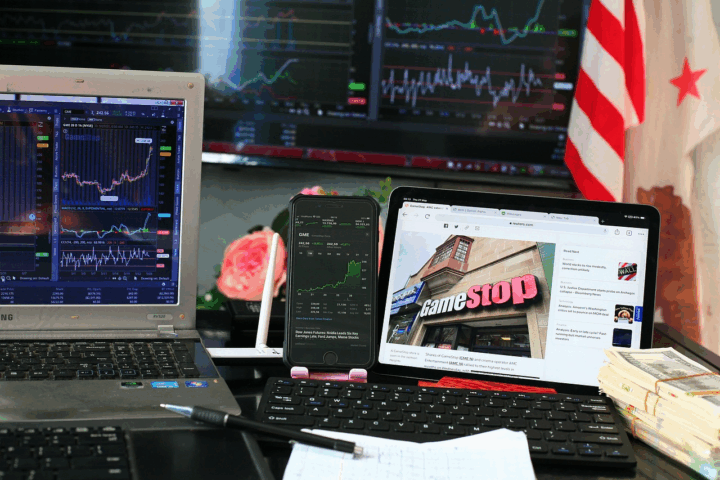In 2025, investors are once again weighing a familiar question: should you chase innovation through high-growth tech, or lean into stability with established blue-chip firms? The answer isn’t binary. However, understanding how the Nasdaq and Dow Jones Industrial Average (DJIA) reflect different investment dynamics is crucial for shaping balanced, forward-looking portfolios.
Successful investors in today’s market environment increasingly blend the two — creating a portfolio that can weather shocks while capitalizing on long-term transformation.
Why Should Growth Investors Consider Nasdaq Exposure
When comparing Nasdaq vs Dow, this index stands out for its focus on innovation, momentum, and high-growth sectors — making it more volatile, but also potentially more rewarding during tech-driven bull markets.
As of Q2 2025:
- Over 57% of Nasdaq-100 weight is concentrated in tech and tech-adjacent sectors.
- The index is up 18.4% YTD, driven largely by renewed investor optimism in artificial intelligence, clean energy, and quantum computing.
- Volatility remains high: 30-day average volatility is 23%, compared to just 14% for the Dow.
Nasdaq exposure offers strong upside during growth cycles — but it also means managing short-term volatility. During rate hikes or risk-off periods, growth-heavy indices like the Nasdaq tend to underperform.
Still, for investors with longer time horizons and higher risk tolerance, Nasdaq-aligned assets serve as a powerful engine for portfolio appreciation.
Dow Jones: The Benchmark for Stability and Dividends
The DJIA consists of 30 large-cap, legacy firms across sectors including industrials, healthcare, consumer goods, and finance. While some tech firms are present (Apple, Microsoft), the Dow emphasizes diversified blue-chip exposure.
What makes the Dow valuable in 2025:
- It is price-weighted, giving more influence to higher-priced shares — often mature companies with strong earnings consistency.
- It includes dividend-paying giants like Johnson & Johnson, Coca-Cola, and Chevron — attractive in high-rate environments.
- Year-to-date return is 10.1%, with significantly lower volatility than the Nasdaq.
The Dow tends to outperform during periods of economic uncertainty, rising rates, or rotation into value. It acts as a cushion when speculative capital exits high-growth names.
Strategic Differences in Index Design
Understanding the structure of these indices can also help investors align them with their goals:
Nasdaq-100
- Market-cap weighted
- High concentration risk in top 5 holdings (~40%)
- Dominated by tech and communication services
- Lower dividend yield (~0.7%)
Dow Jones
- Price-weighted
- More evenly distributed influence across constituents
- Broader sector representation
- Higher average dividend yield (~2.3%)
For portfolio builders, this means the Nasdaq provides stronger growth exposure, while the Dow enhances defensive positioning and income generation.
Portfolio Construction: Blending Innovation and Stability
Rather than choosing one index over the other, many investors in 2025 are adopting dual-index strategies — allocating across both Nasdaq and Dow-linked ETFs to manage sector exposure and risk.
Consider these allocation frameworks:
- Aggressive Growth Portfolio: 70% Nasdaq-focused funds, 30% Dow-linked holdings. Suited for long time horizons and higher volatility tolerance.
- Balanced Portfolio: 50/50 split. Offers exposure to emerging innovation trends while maintaining downside protection.
- Defensive Income Portfolio: 30% Nasdaq, 70% Dow. Prioritizes capital preservation and yield in uncertain macro environments.
With tools like fractional investing, thematic ETFs, and smart-beta products, even retail investors can fine-tune these allocations to match their goals.
How Do Market Cycles Affect Nasdaq vs Dow Performance
2025 is shaping up to be a year of continued monetary divergence, cooling inflation, and heightened geopolitical uncertainty. In this environment:
- Tech stocks are rebounding after correction years in 2022–2023, powered by real AI deployment and productivity growth.
- Blue-chip dividend stocks are attracting income-seeking investors amid slower rate cuts and inflation persistence.
- Sector rotation is ongoing — with capital flowing between innovation and defensiveness depending on macro headlines.
By understanding the Nasdaq-Dow dynamic, investors gain a toolkit to adapt rather than react to market conditions.
Final Takeaway: Use the Index Lens to Sharpen Strategy
Both the Nasdaq and the Dow offer more than performance benchmarks — they are proxies for two core portfolio pillars: growth and resilience. When used together, they create strategic balance.
In 2025, smart investing isn’t about choosing sides. It’s about understanding what each part of your portfolio is doing — and why. If you’re planning for retirement, reinvesting capital gains, or managing institutional mandates, aligning Nasdaq and Dow exposure to your goals helps you stay grounded while pursuing growth.







